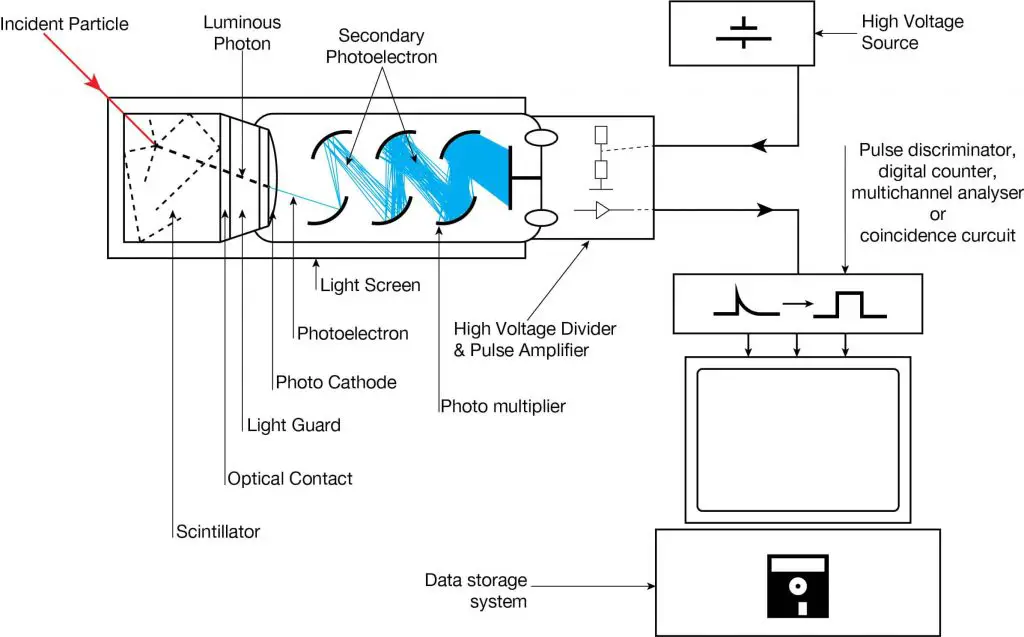
Photomultiplier tubes (PMTs) are a photon detection device that uses the photoelectric effect combined with secondary emission to convert light into an electrical signal. A photomultiplier absorbs light emitted by the scintillator and re-emit it in the form of electrons via the photoelectric effect. The PMT has been the main choice for photon detection ever since due to the fact that they have high quantum efficiency and high amplification.
Components of Photomultiplier Tube
The device consists of several components and these components are shown in the figure.
- Photocathode. Right after a thin entry window, is a photocathode, which is made of material in which the valence electrons are weakly bound and have a high cross section for converting photons to electrons via the photoelectric effect. For example, Cs3Sb (caesium-antimony) may be used. As a result, the light created in the scintillator strikes the photocathode of a photomultiplier tube, releasing at most one photoelectron per photon.
- Dynodes. Using a voltage potential, this group of primary electrons is electrostatically accelerated and focused so that they strike the first dynode with enough energy to release additional electrons. There is a series (“stages”) of dynodes made of material of relatively low work function. These electrodes are operated at ever increasing potential (e.g. ~100-200 V between dynodes). At the dynode the electrons are multiplied by secondary emission. The next dynode has a higher voltage which makes the electrons released from the first to accelerate towards it. At each dynode 3-4 electrons are released for every incident electron, and with 6 to 14 dynodes the total gain, or electron amplification factor, will be in the range of ~104-107 when they reach the anode. Typical operating voltages are in the range of 500 to 3000 V. At the final dynode, sufficient electrons are available to produce a pulse of sufficient magnitude for further amplification. This pulse carries information about the energy of the original incident radiation. The number of such pulses per unit time also gives information about the intensity of the radiation.
We hope, this article, Component of Photomultiplier Tube, helps you. If so, give us a like in the sidebar. Main purpose of this website is to help the public to learn some interesting and important information about radiation and dosimeters.